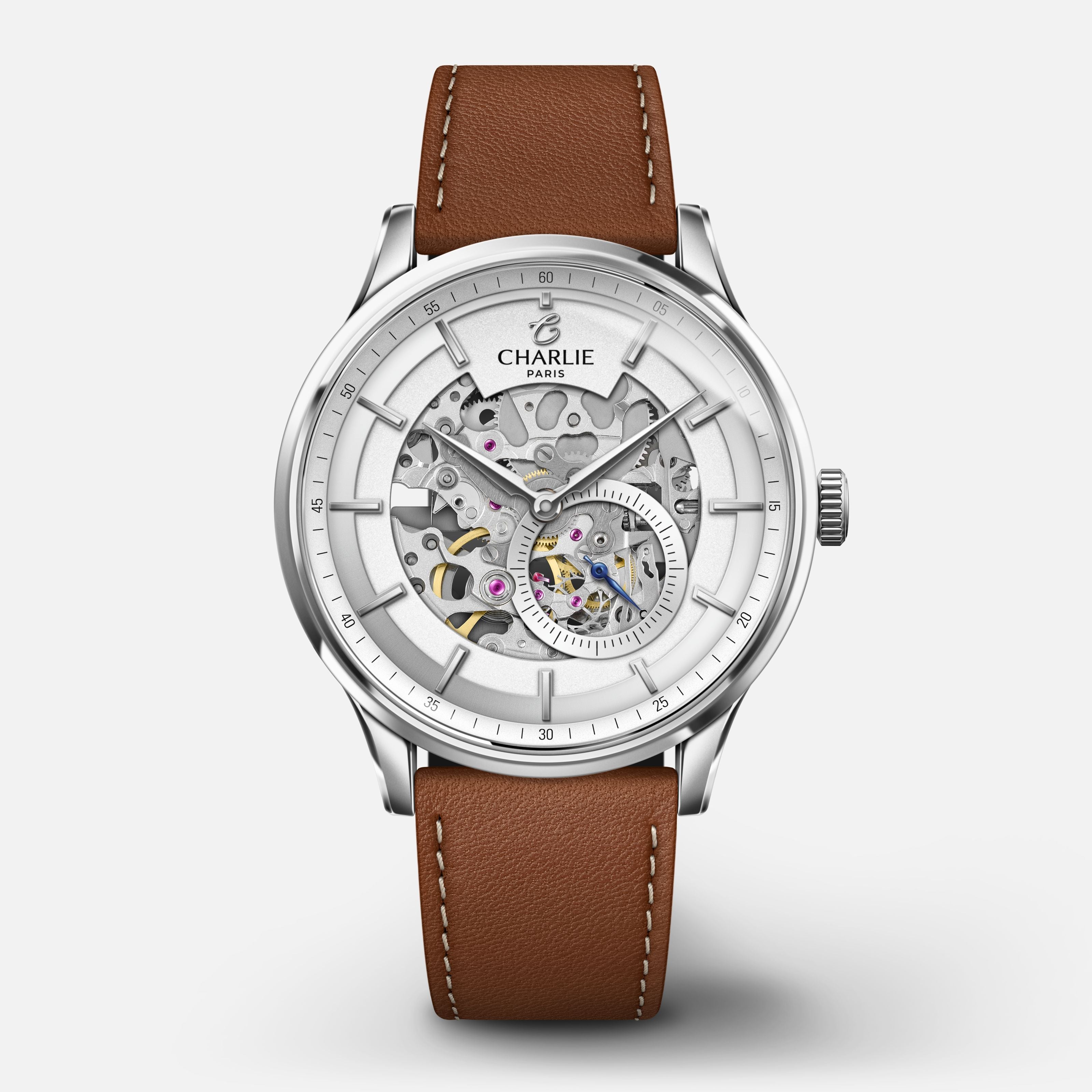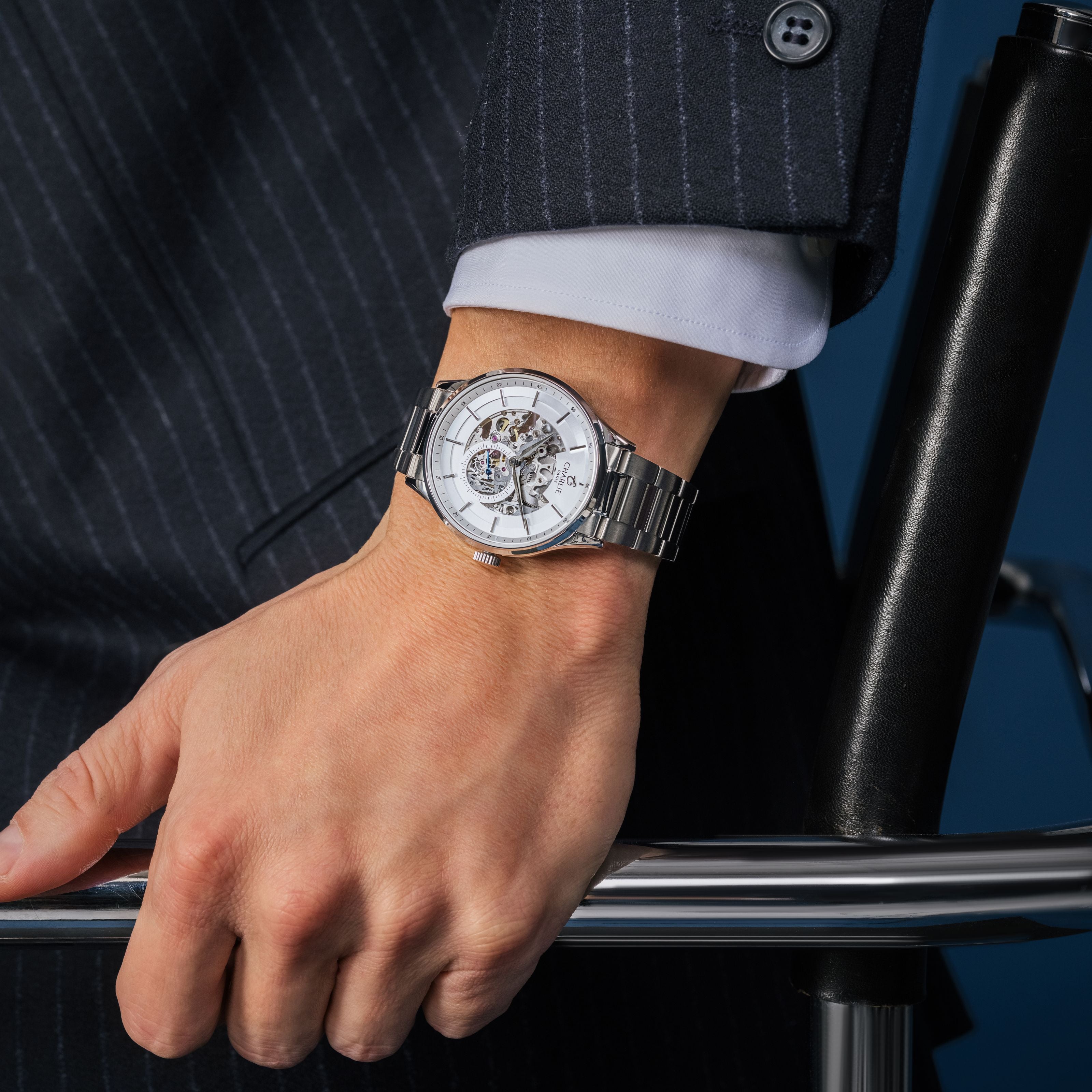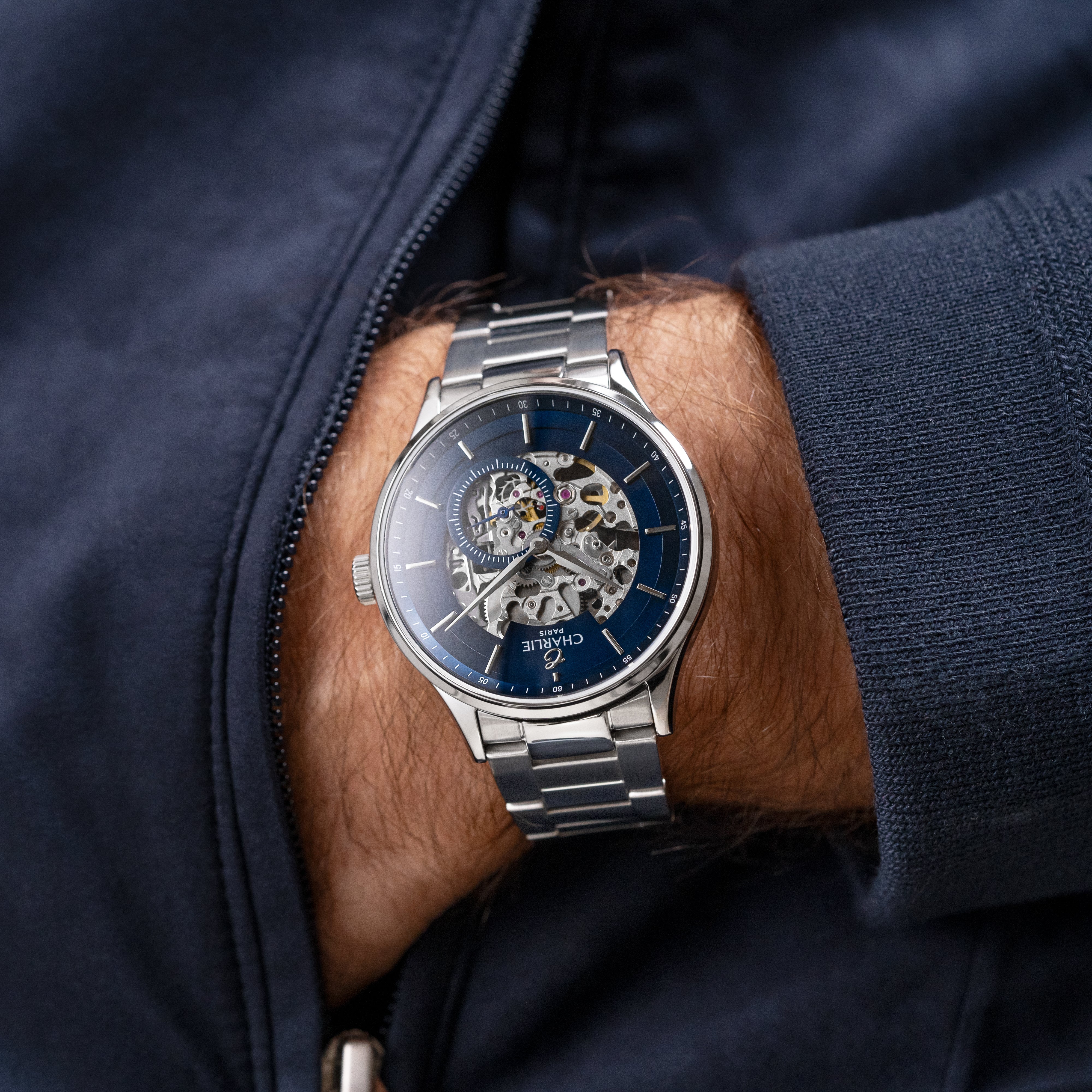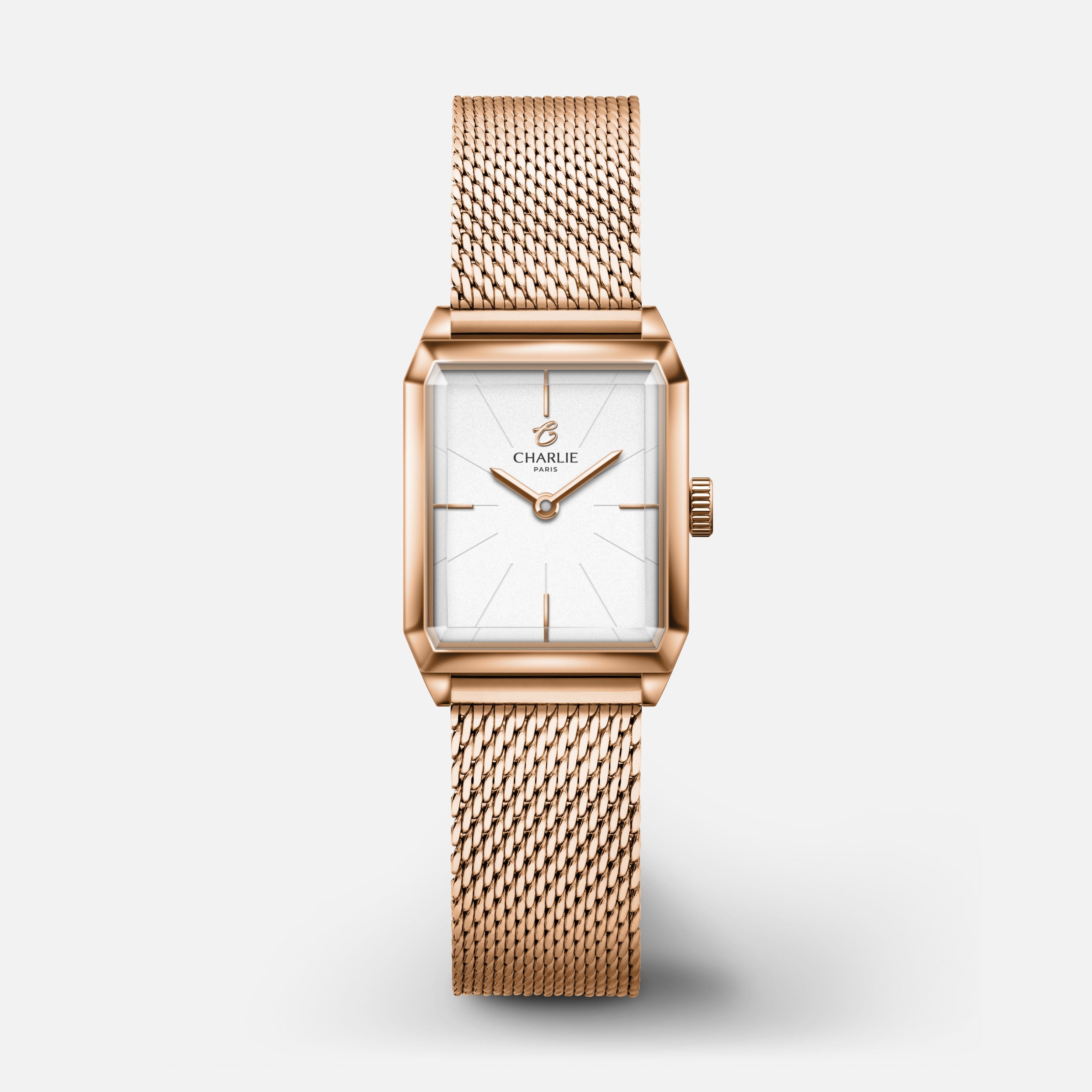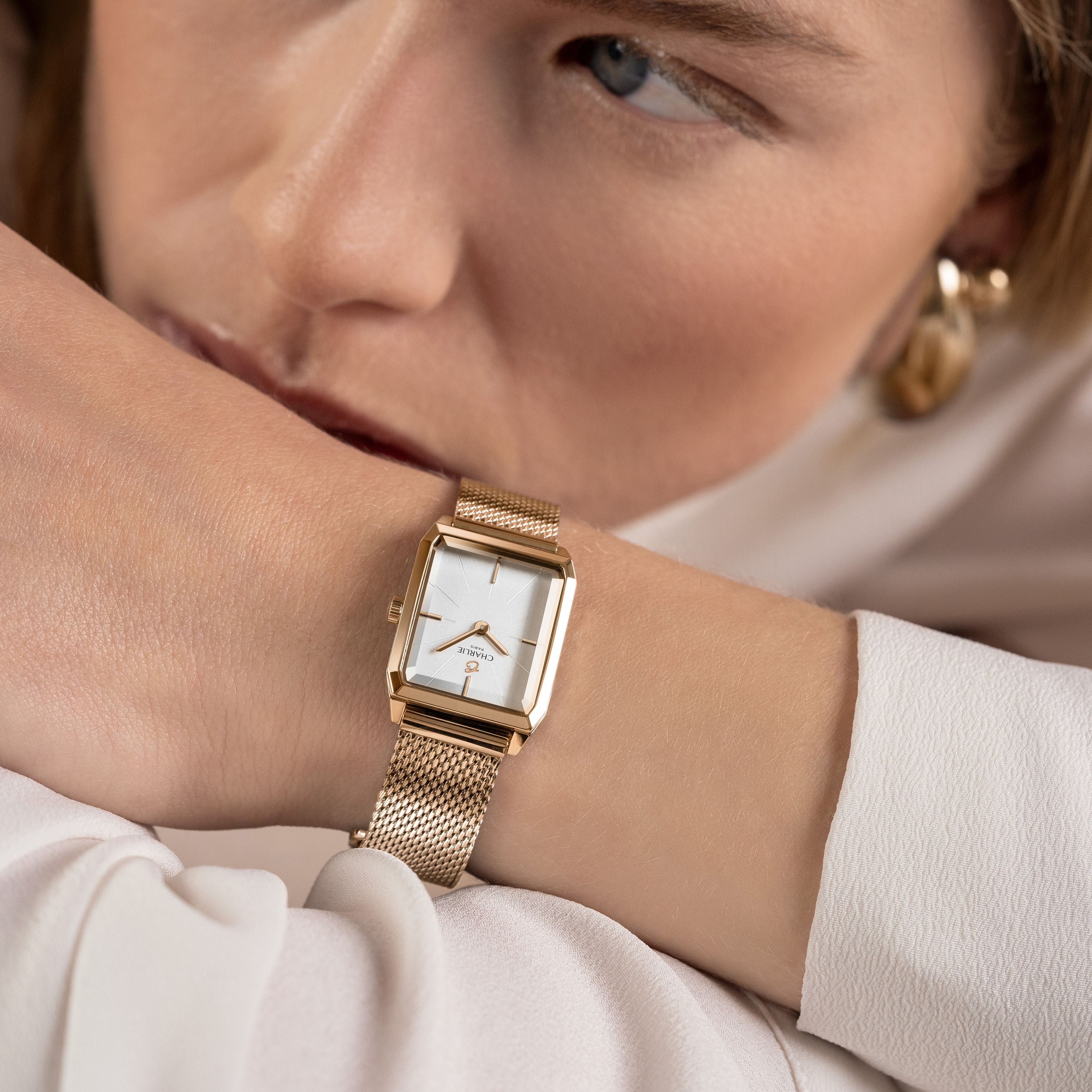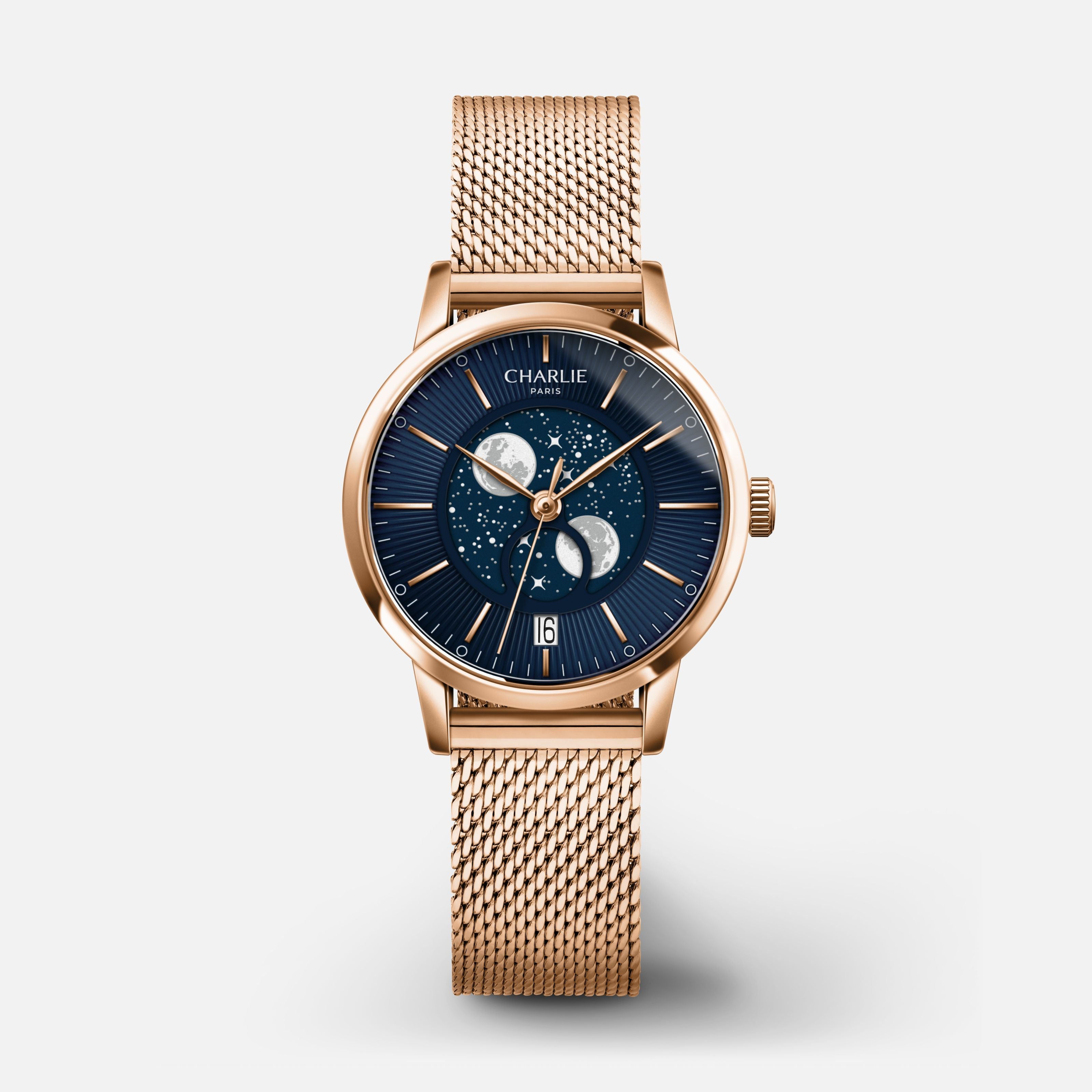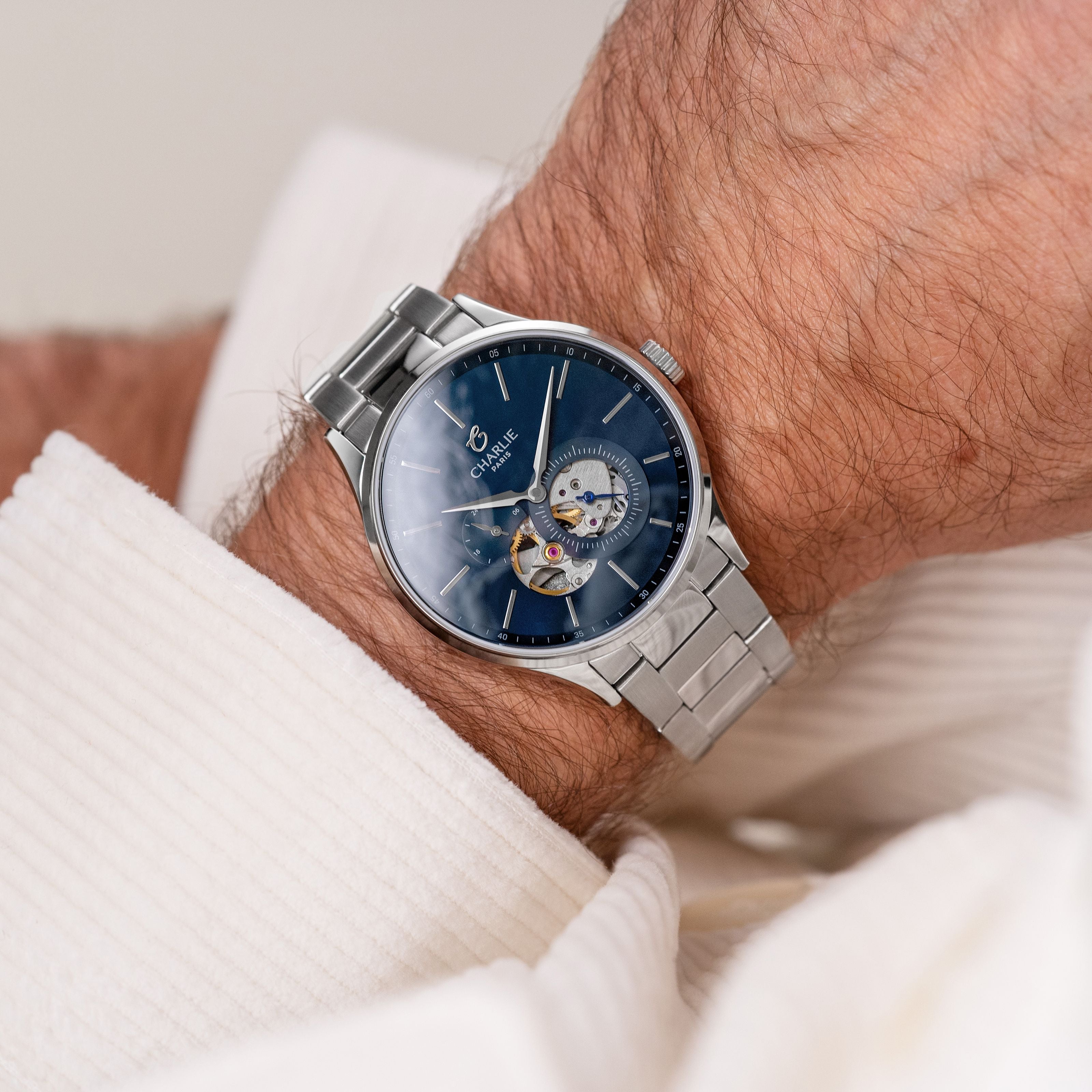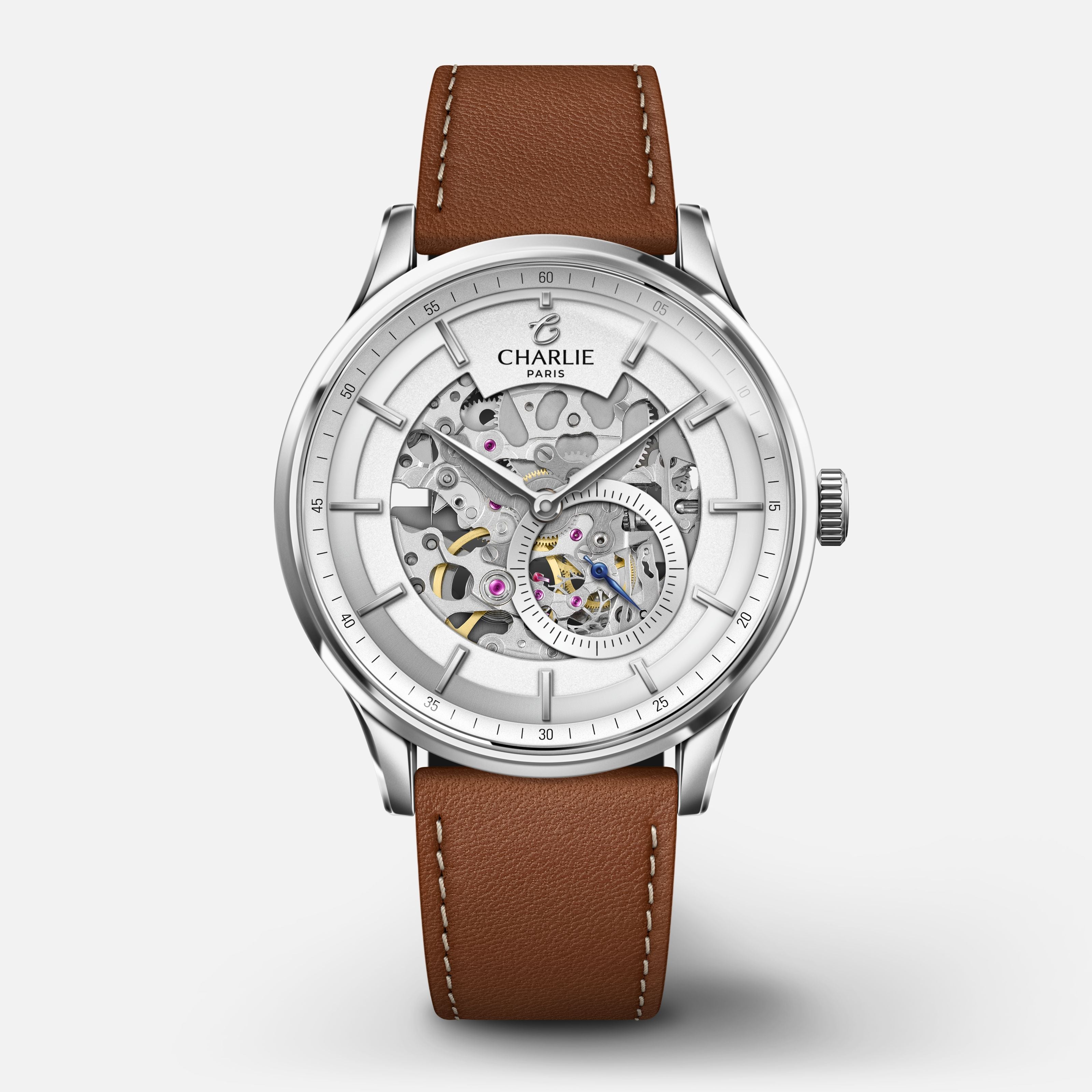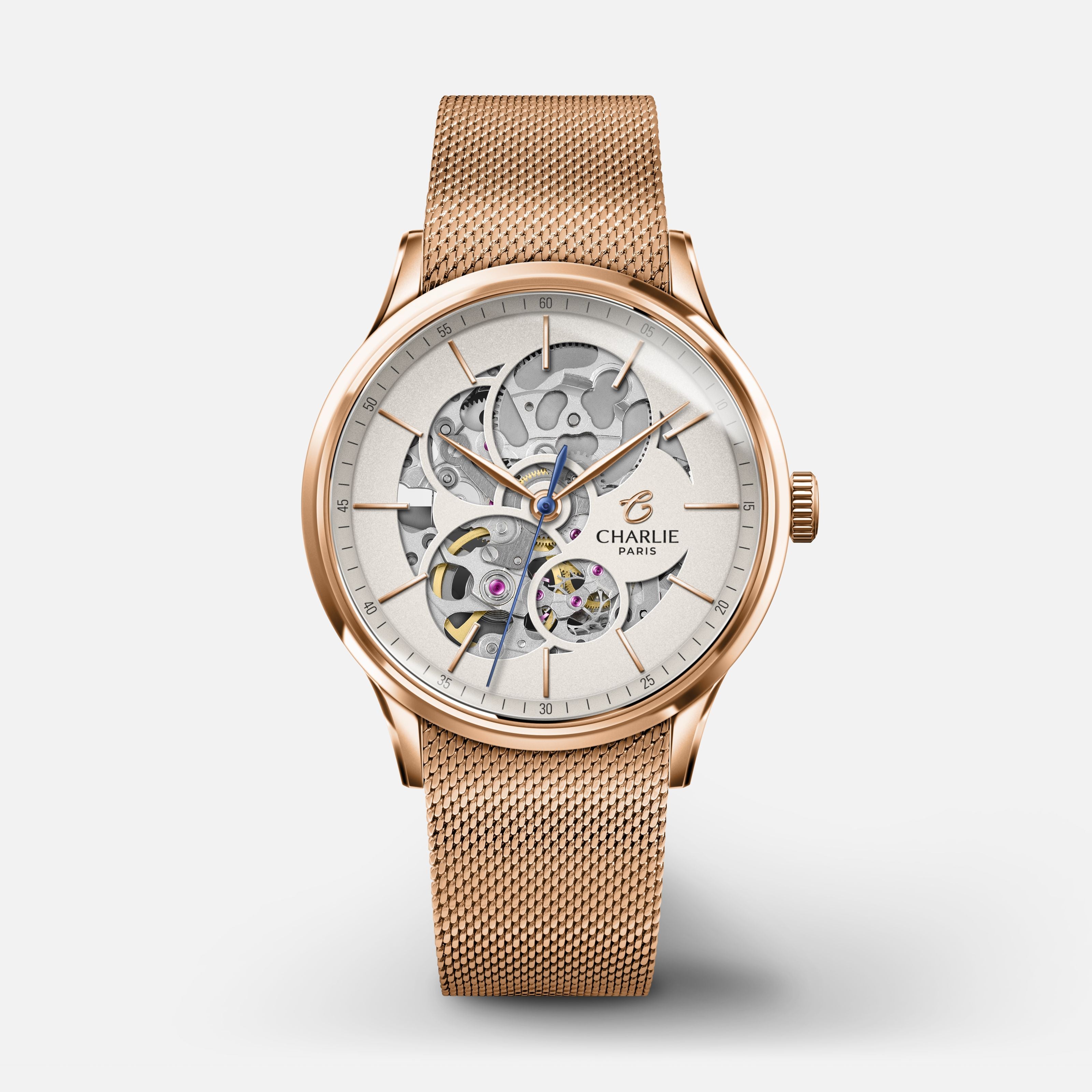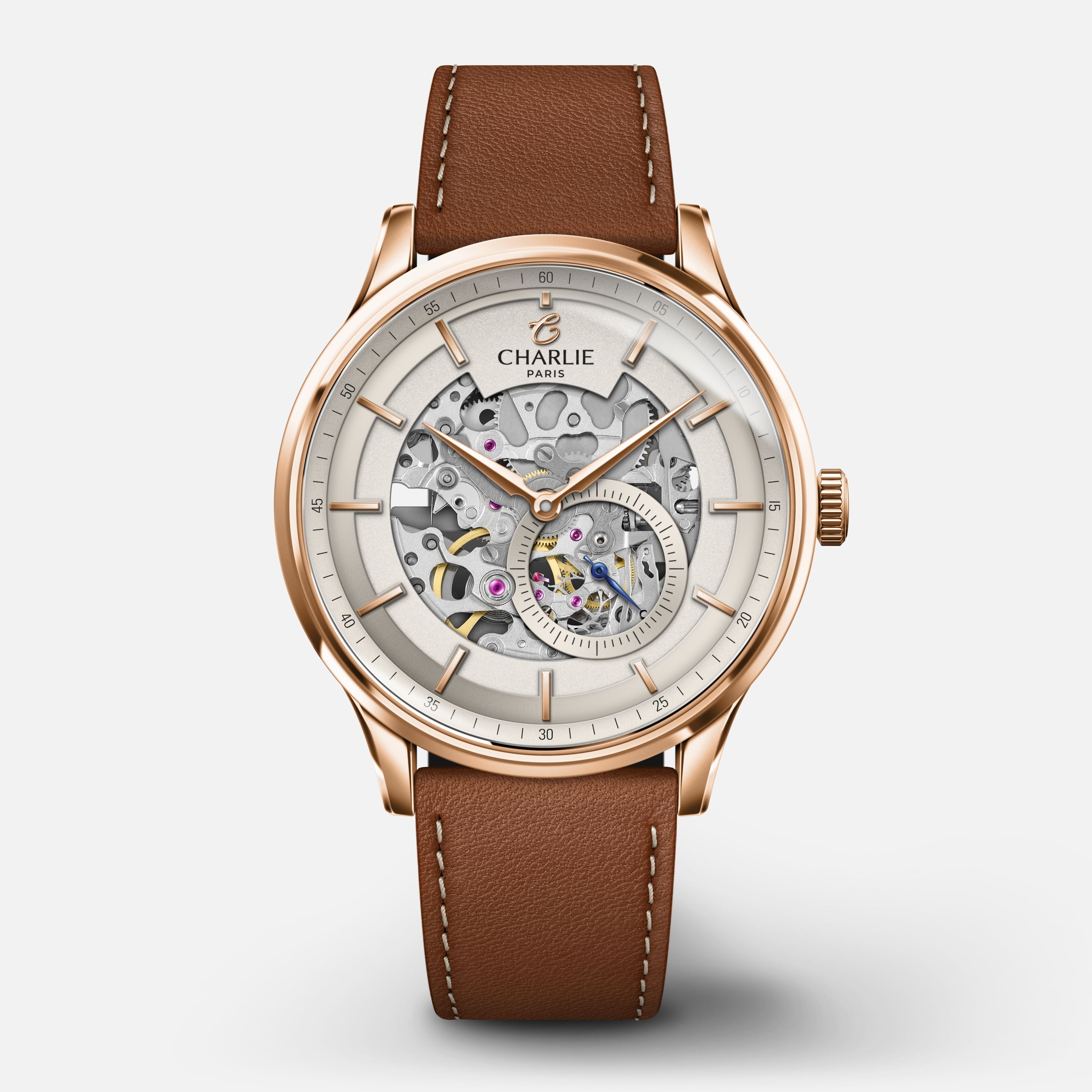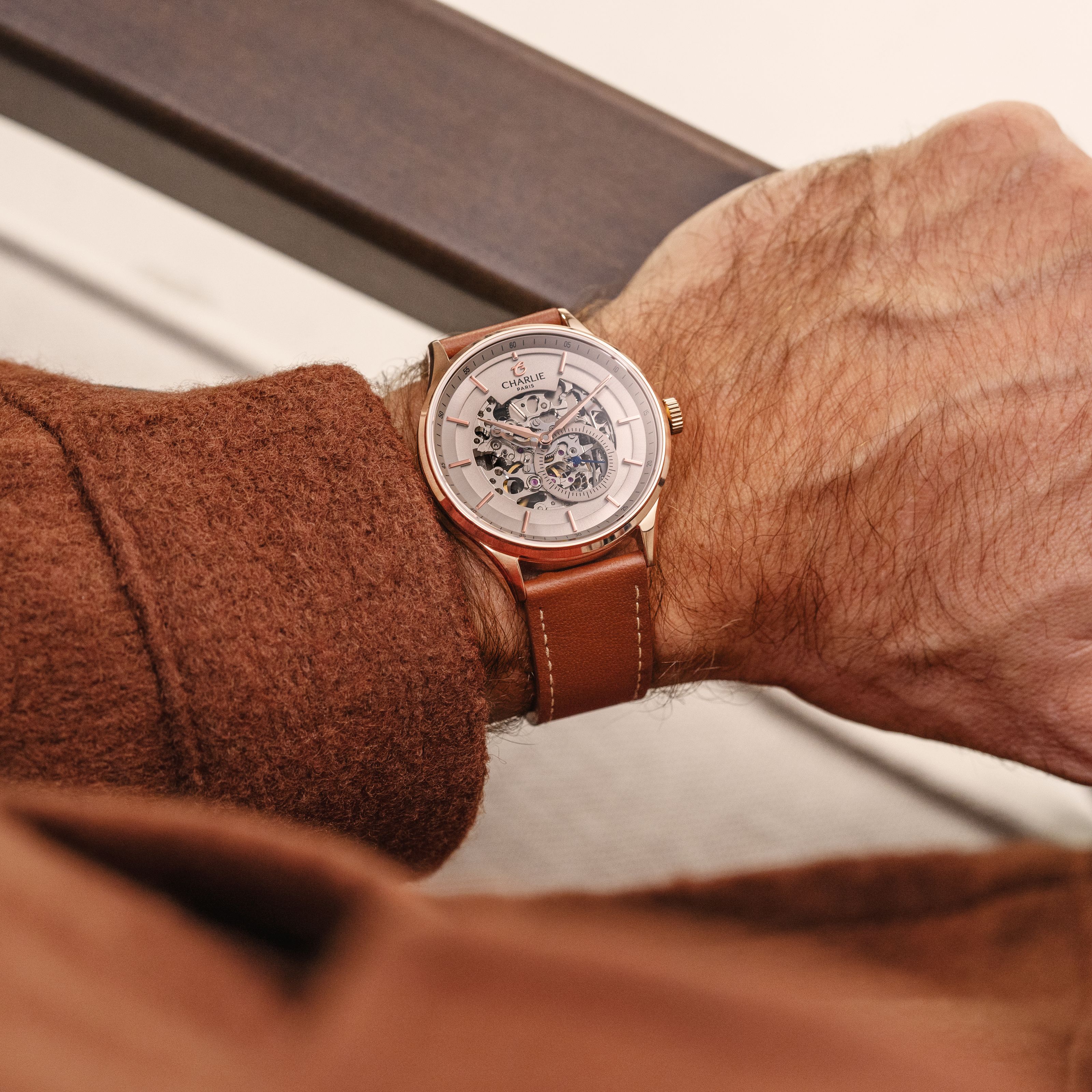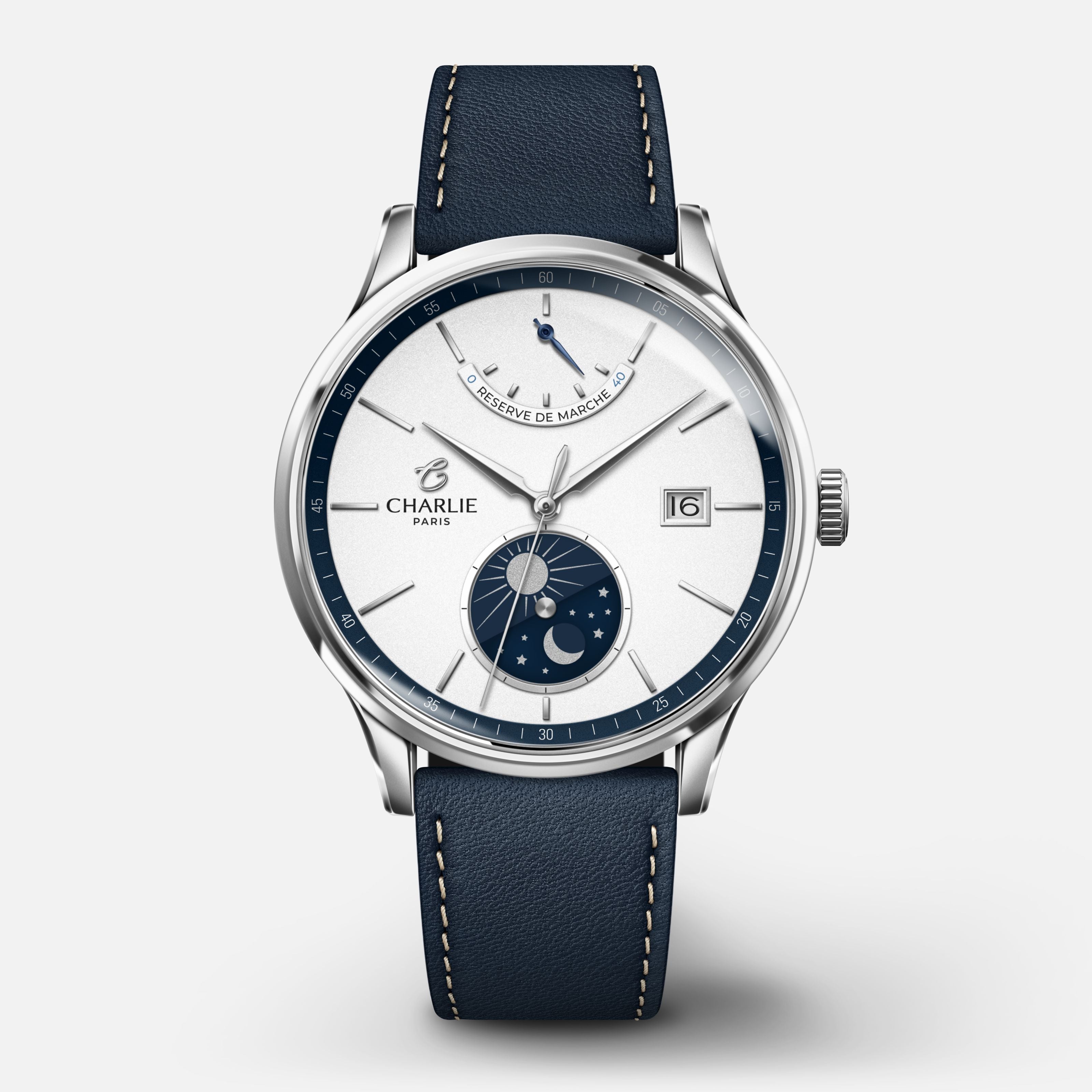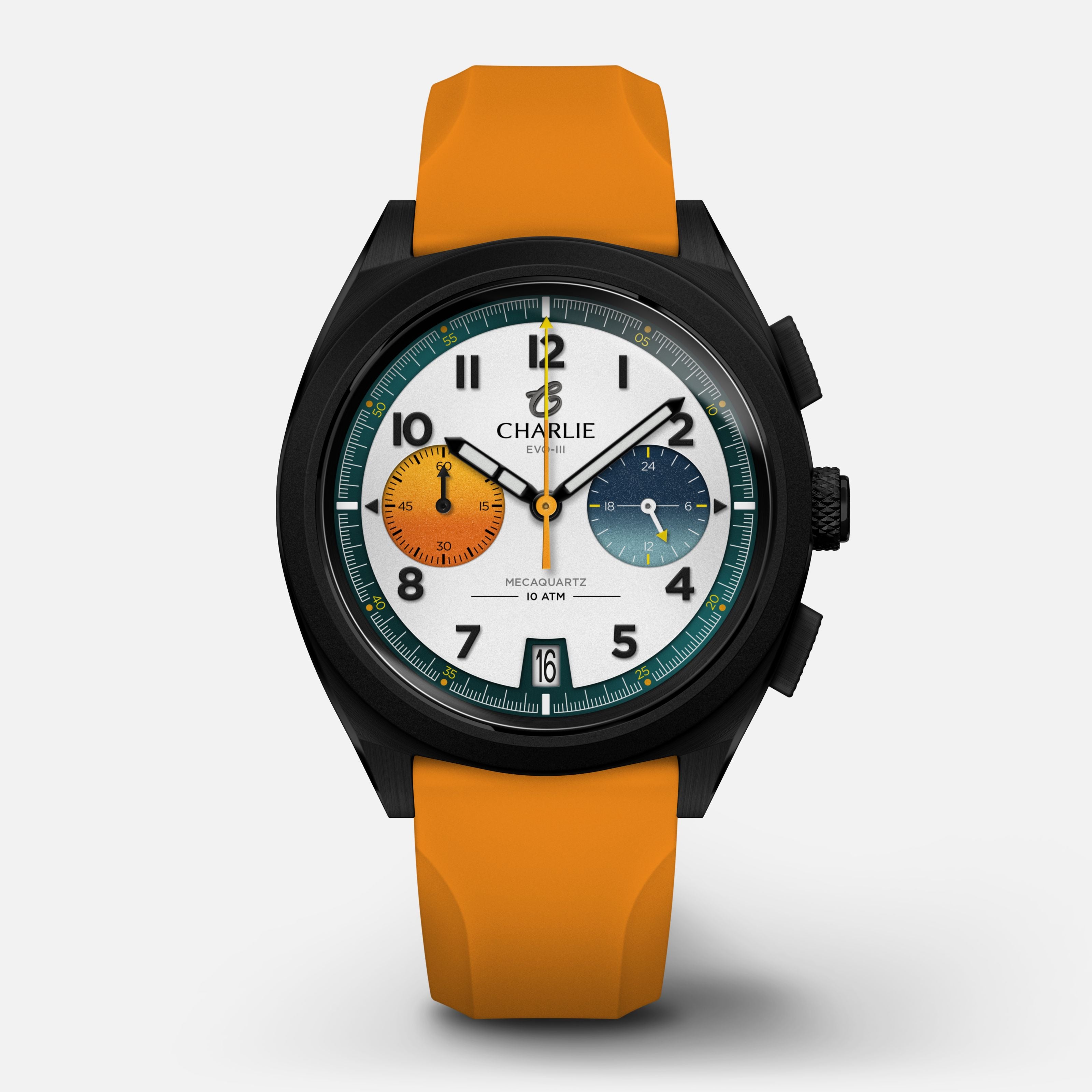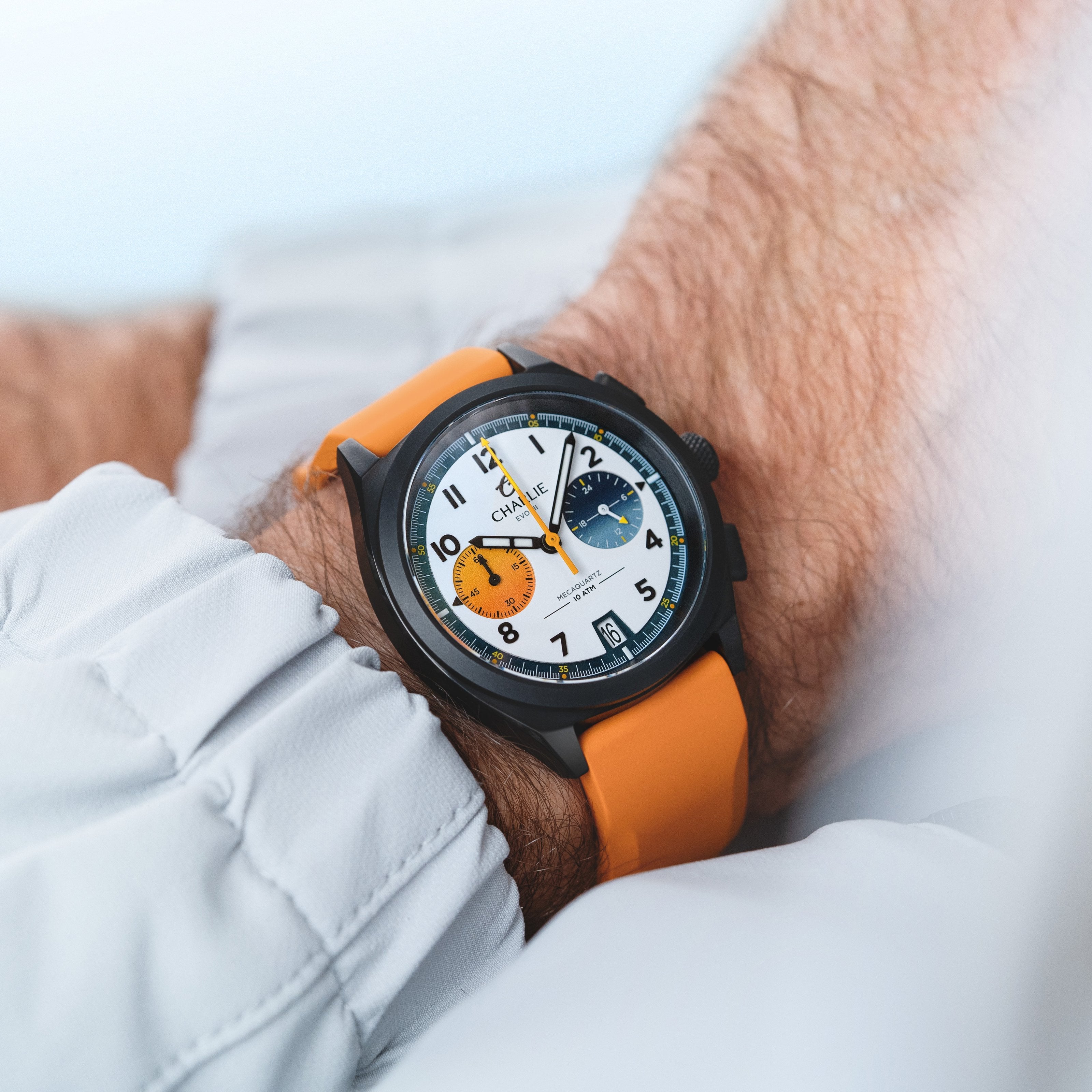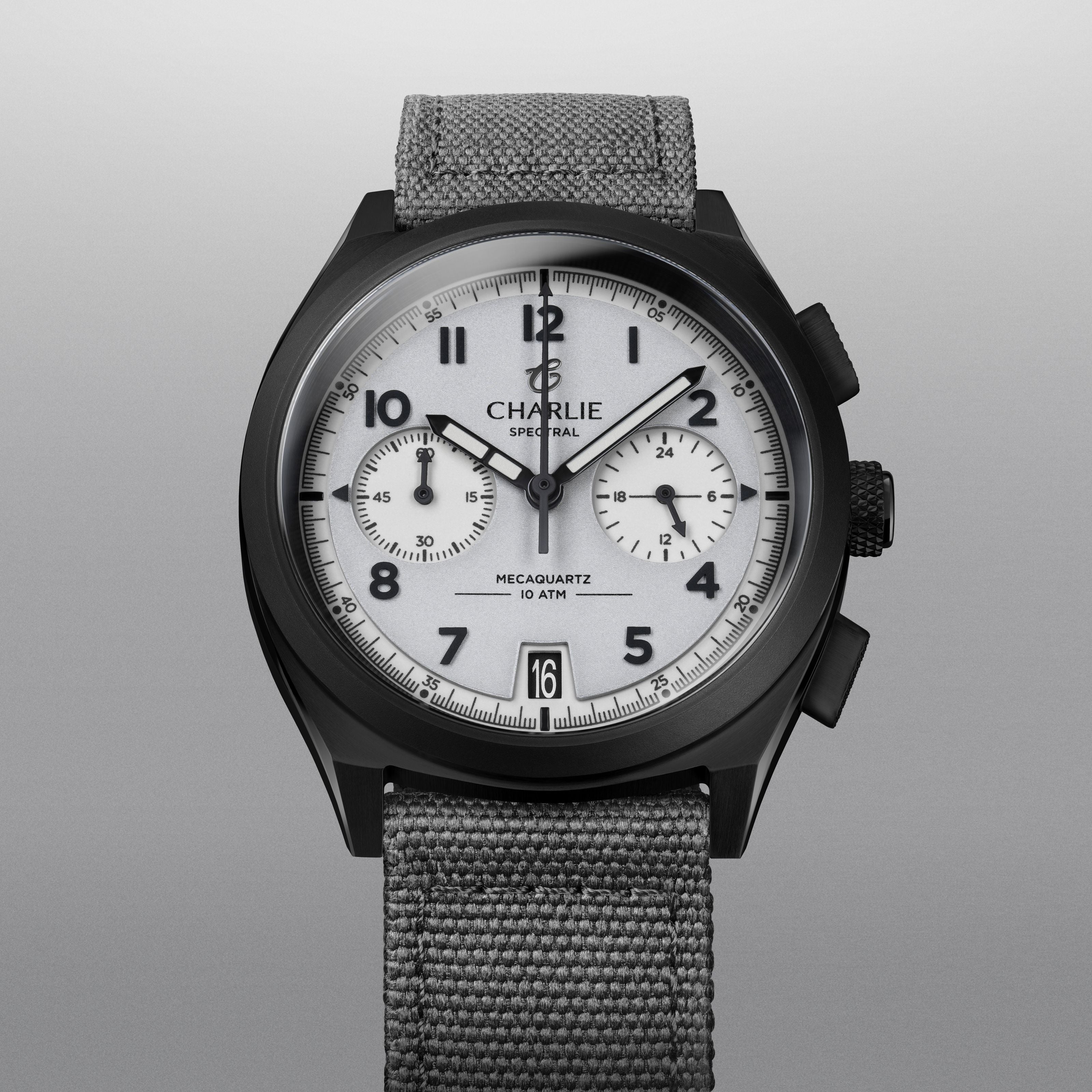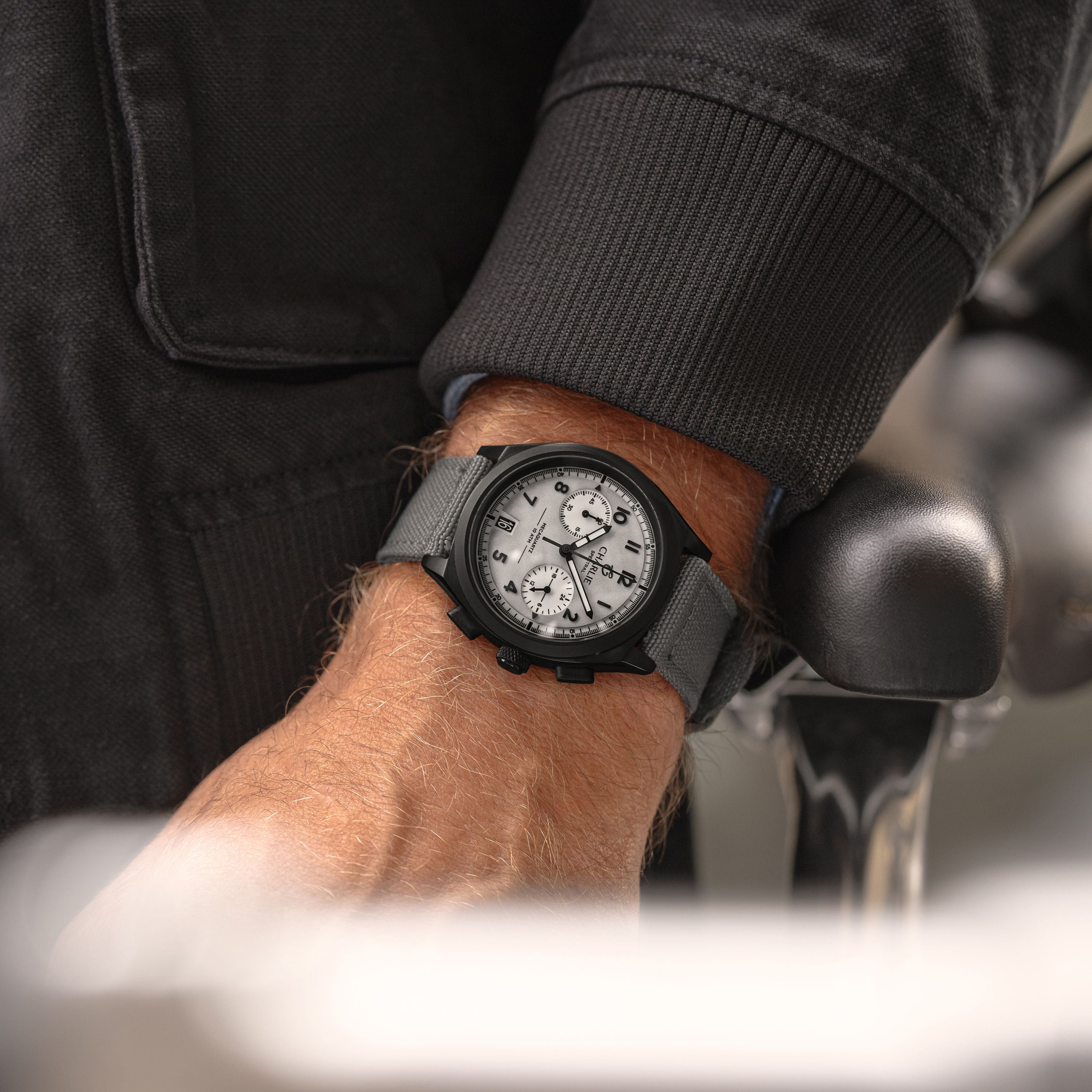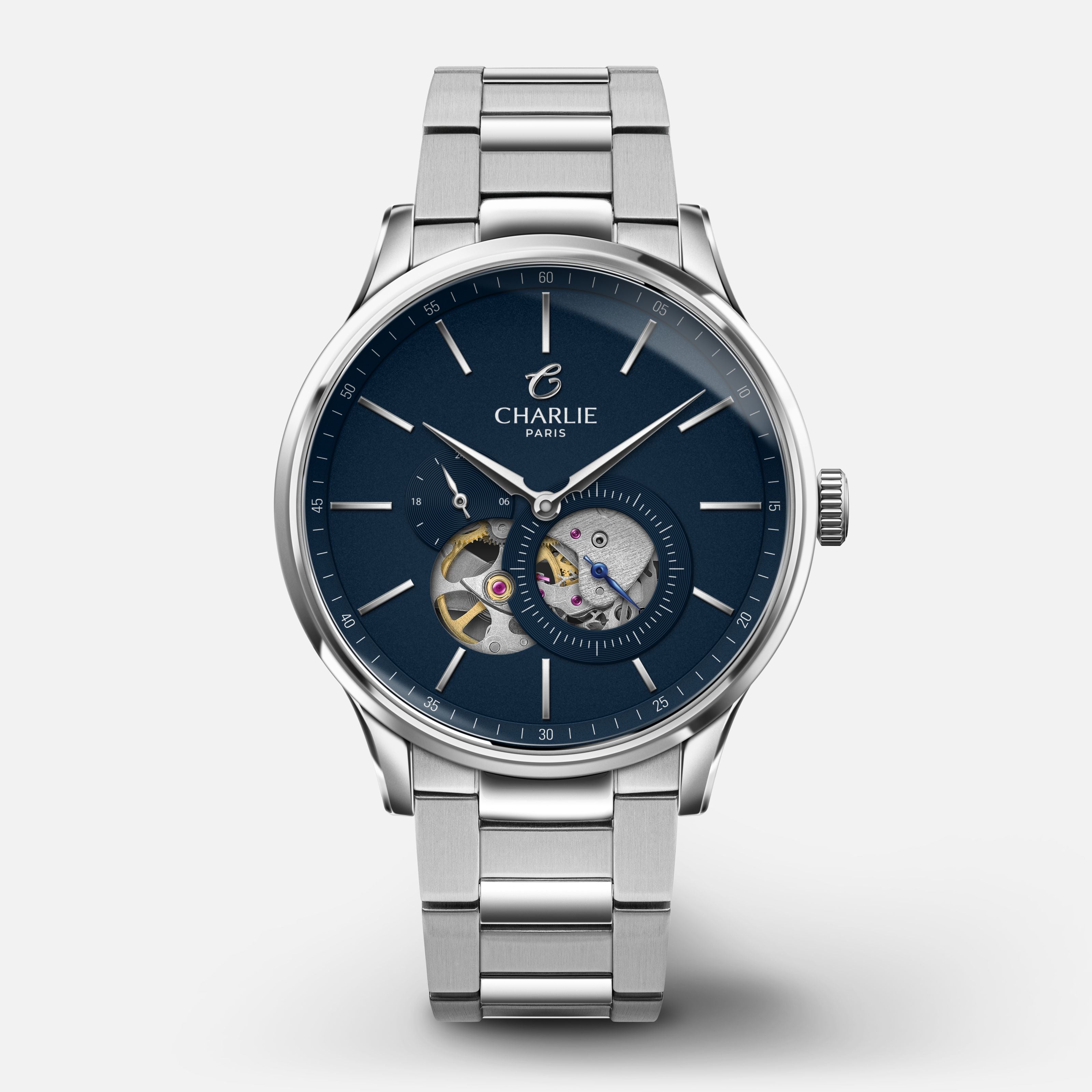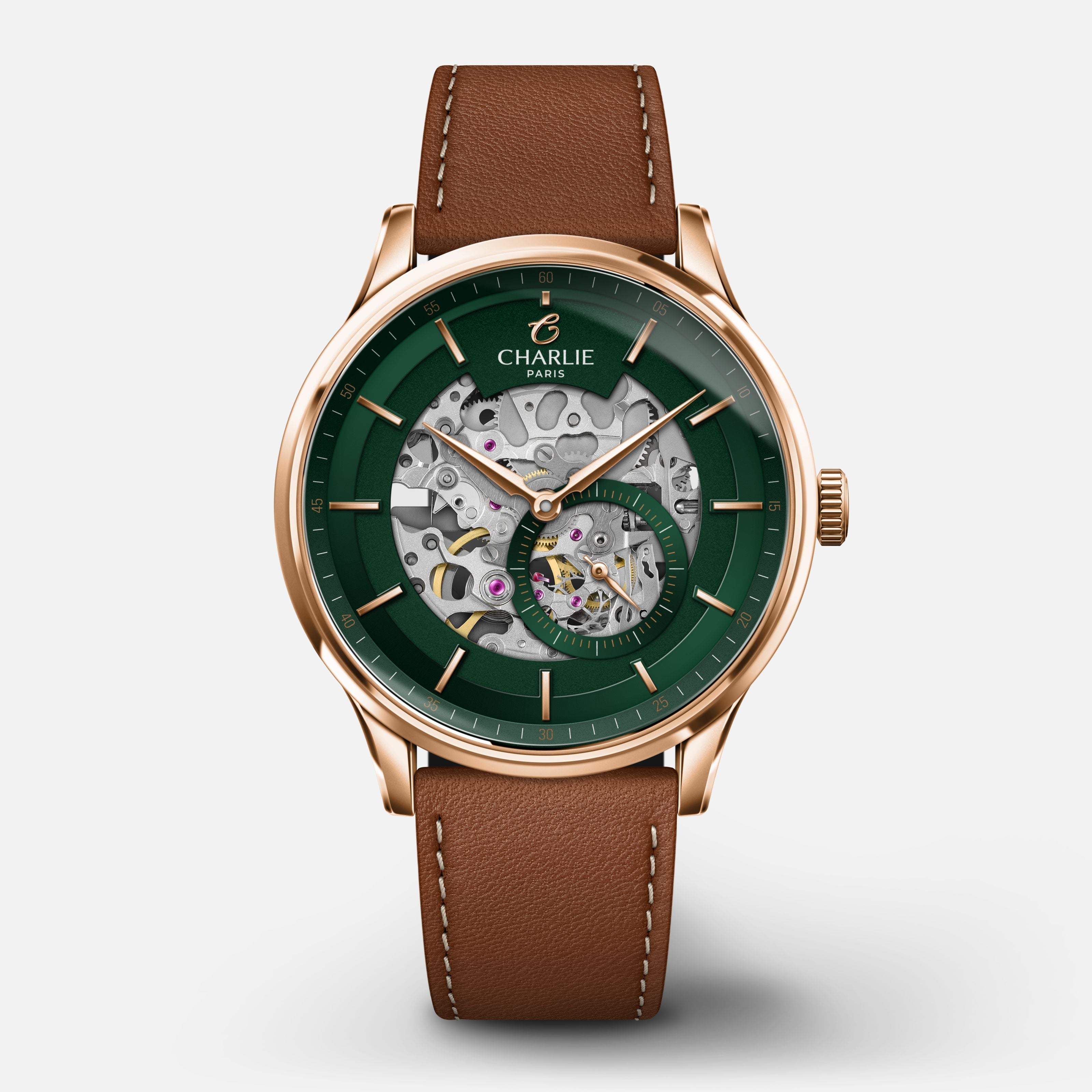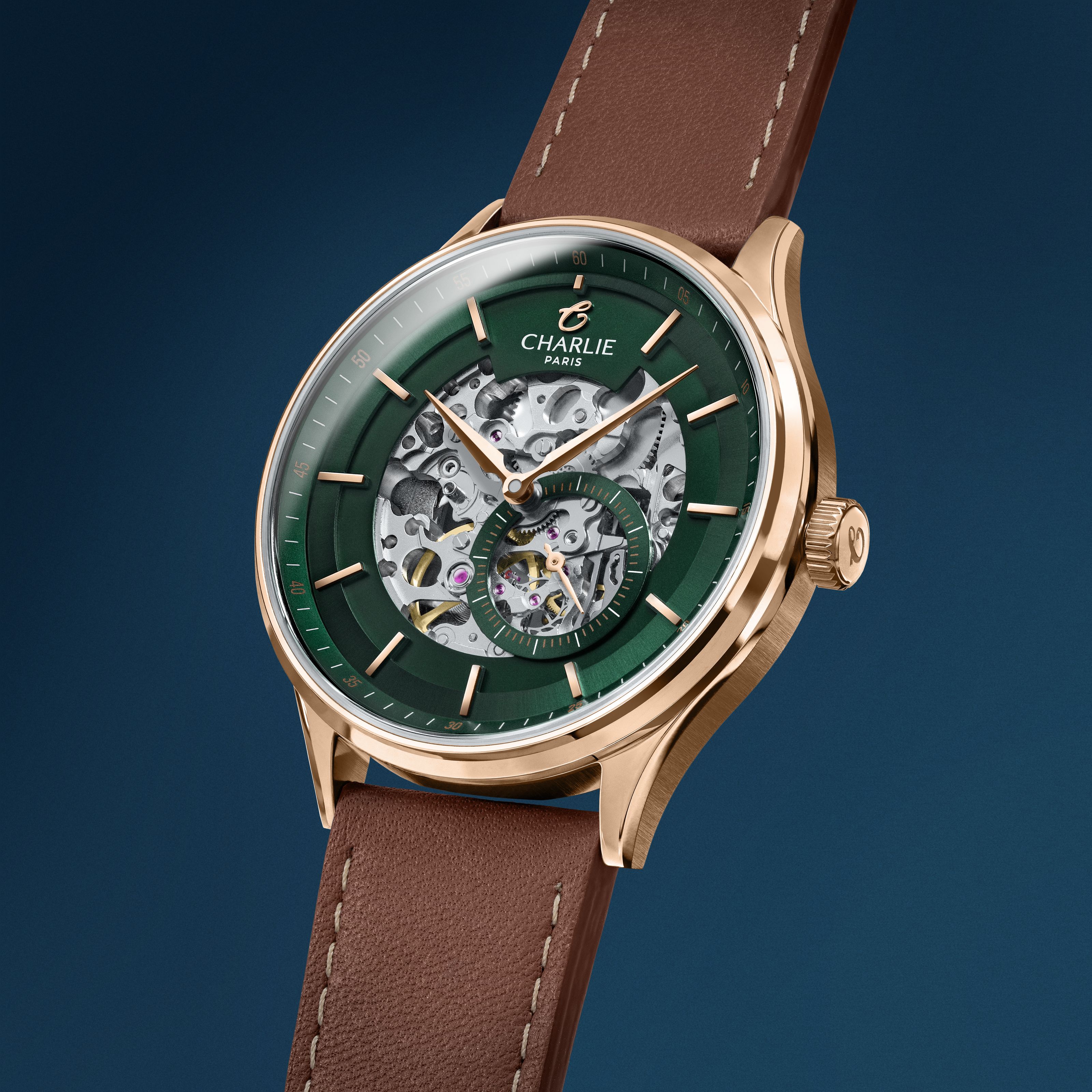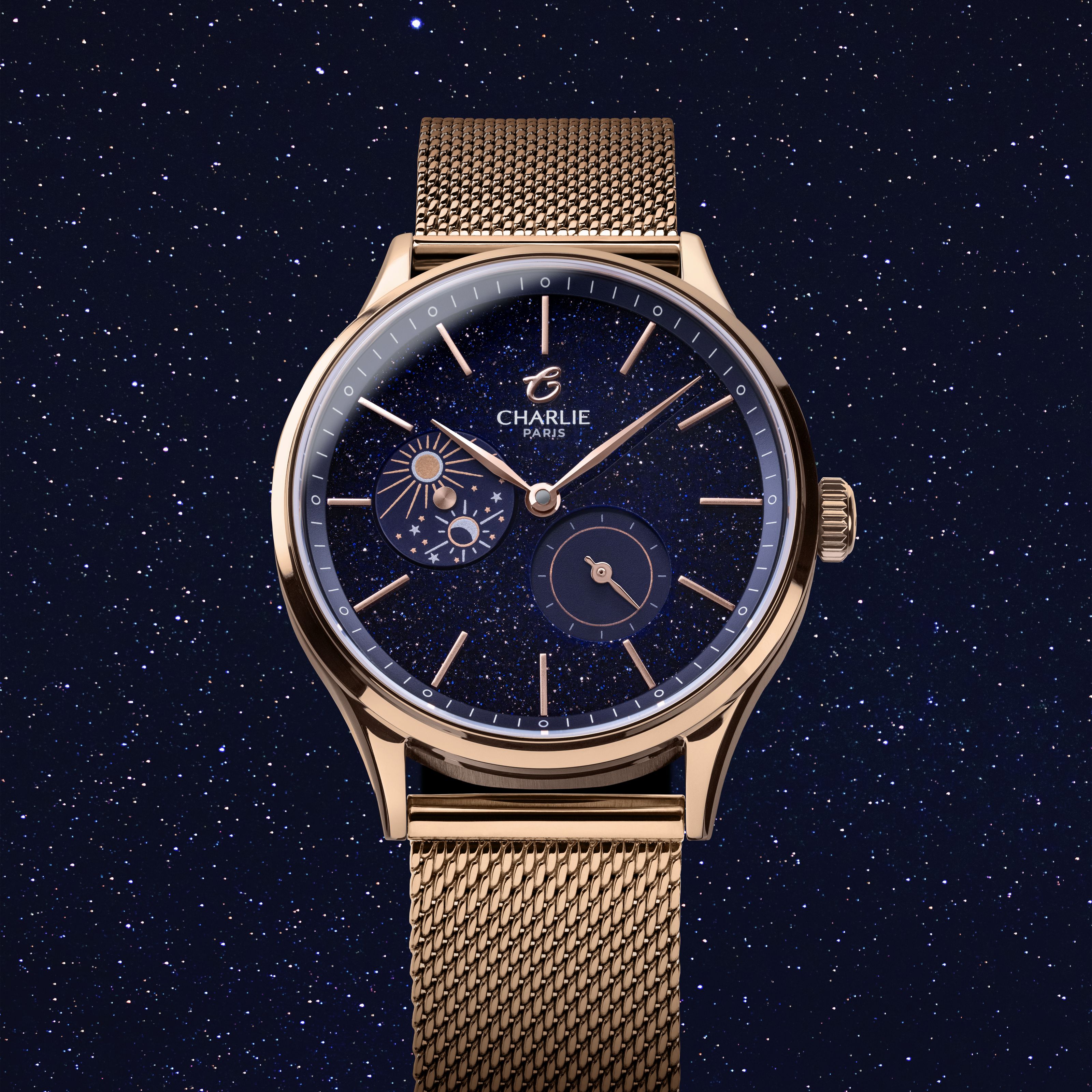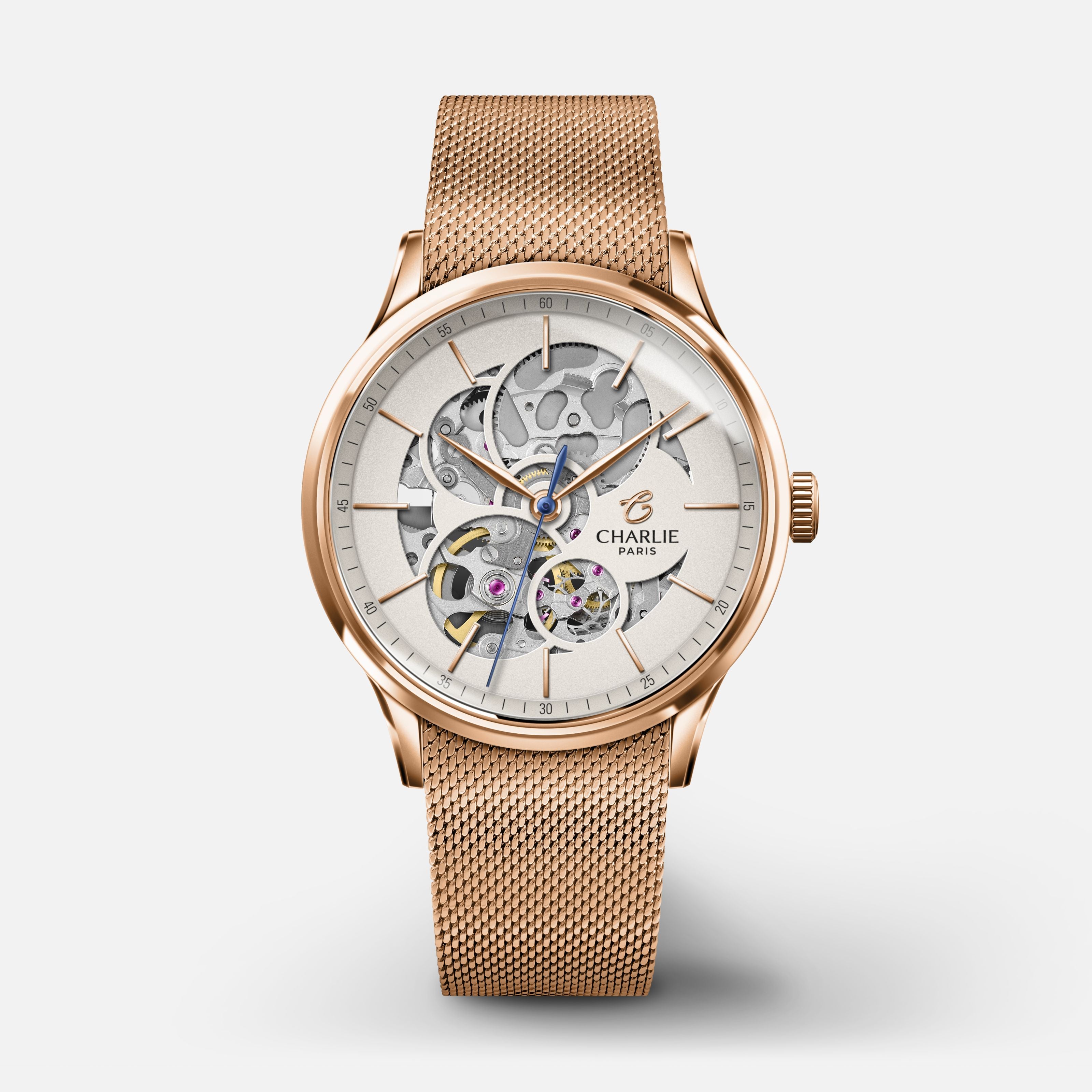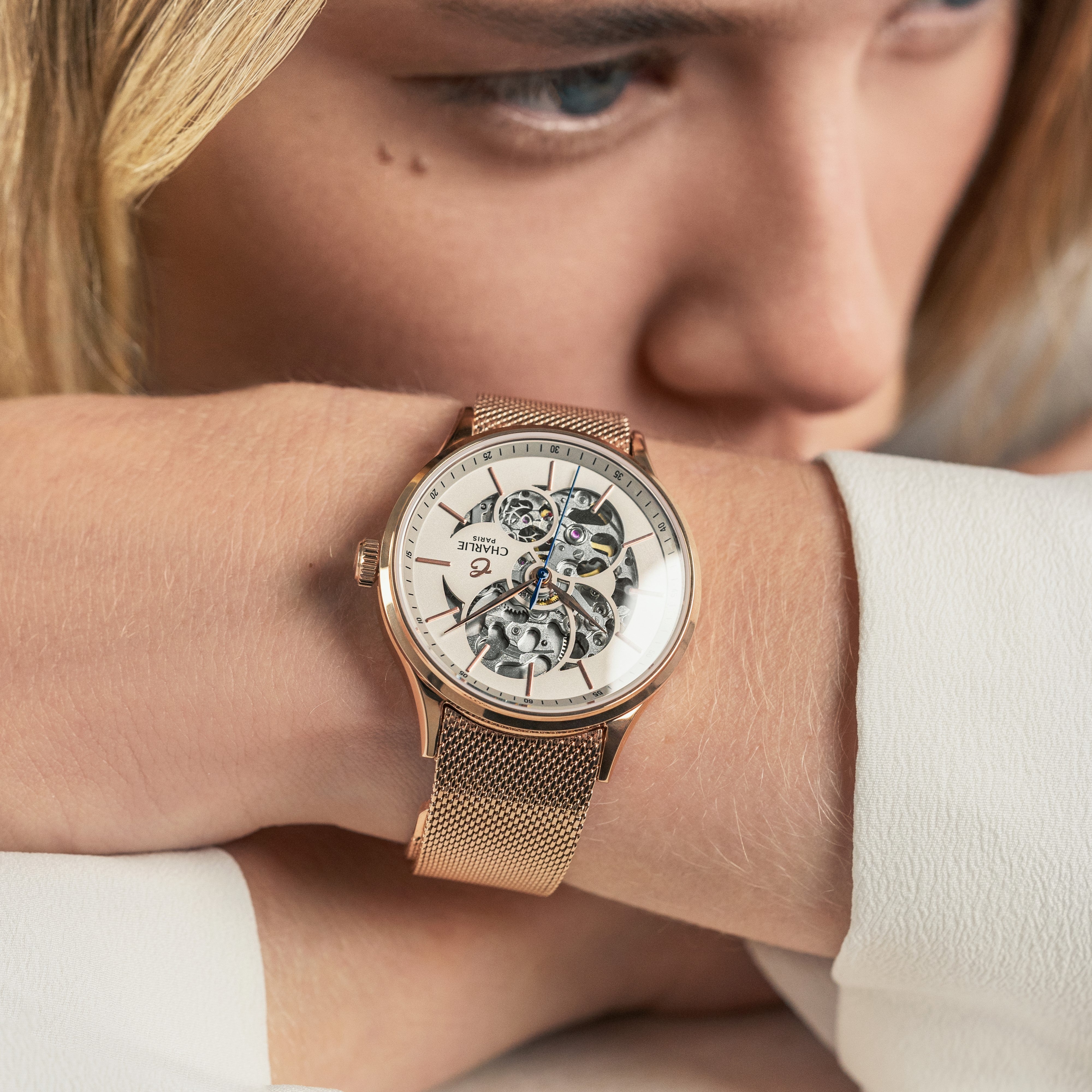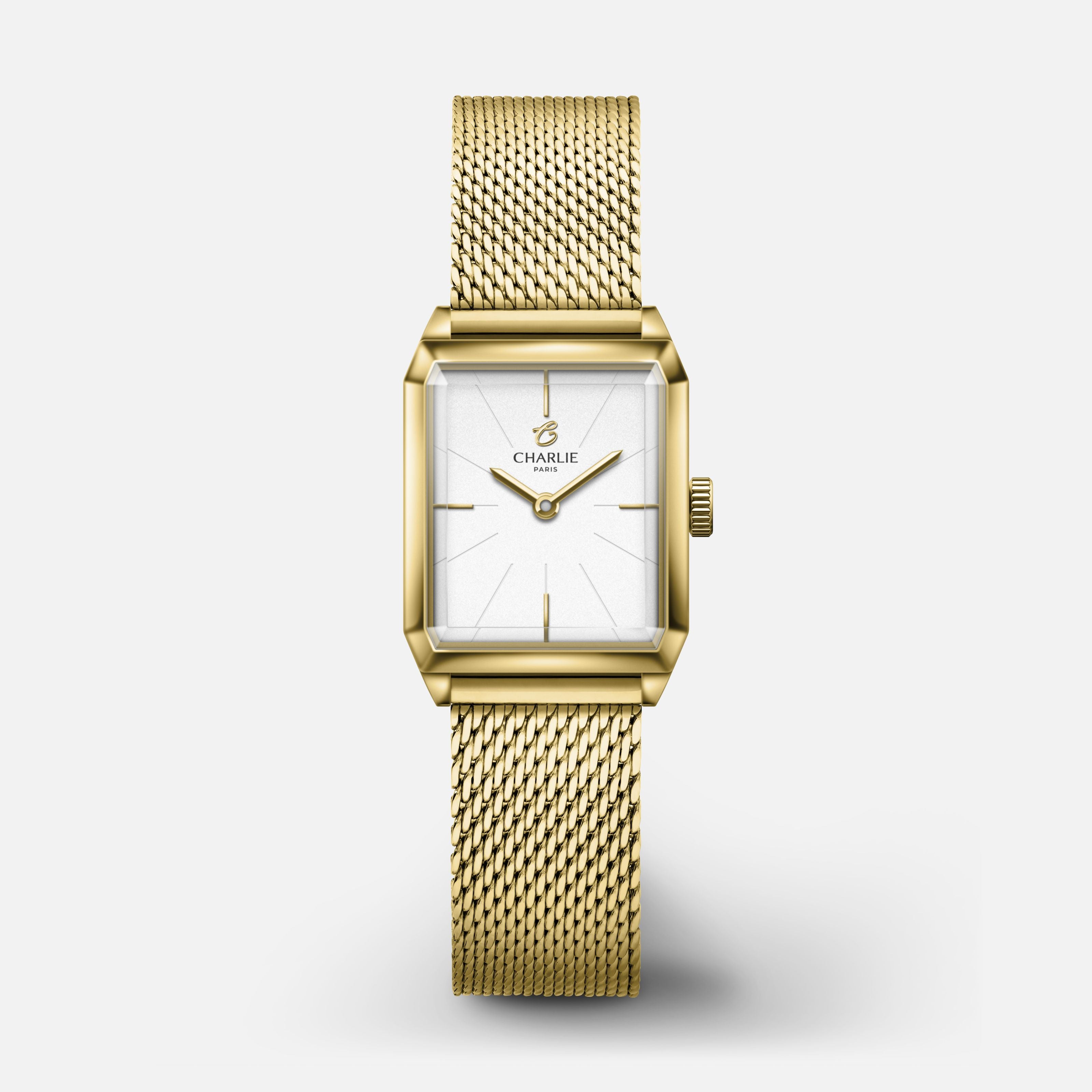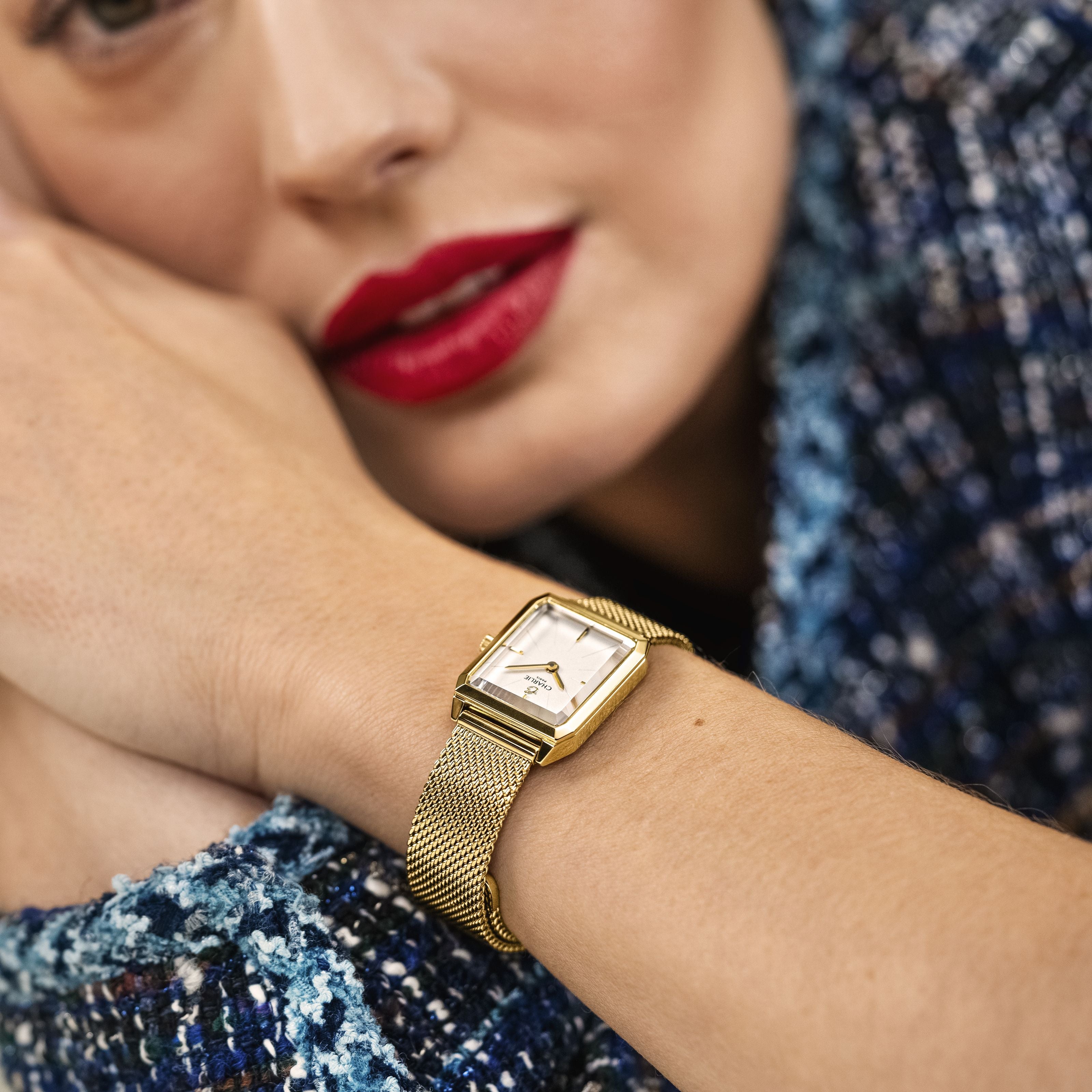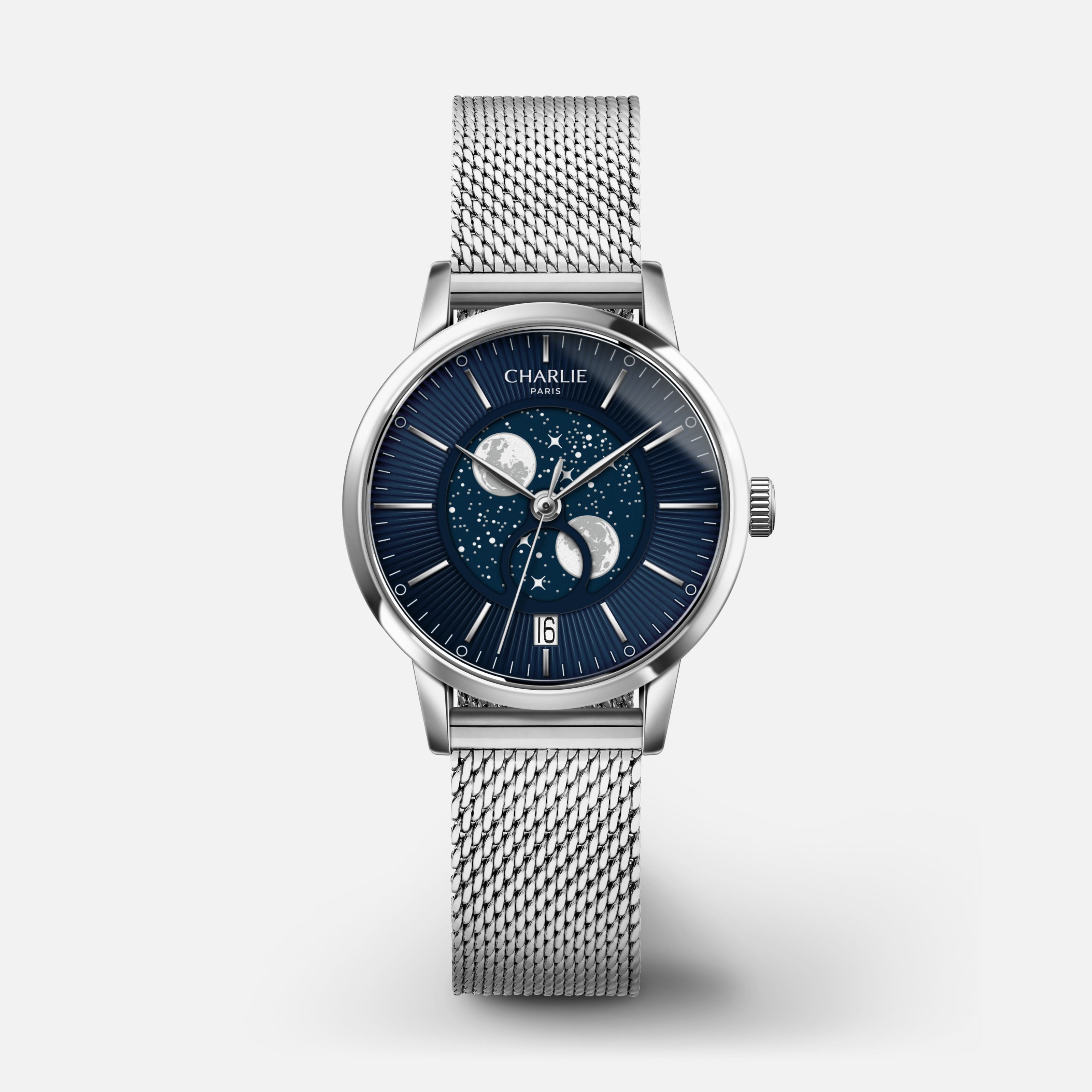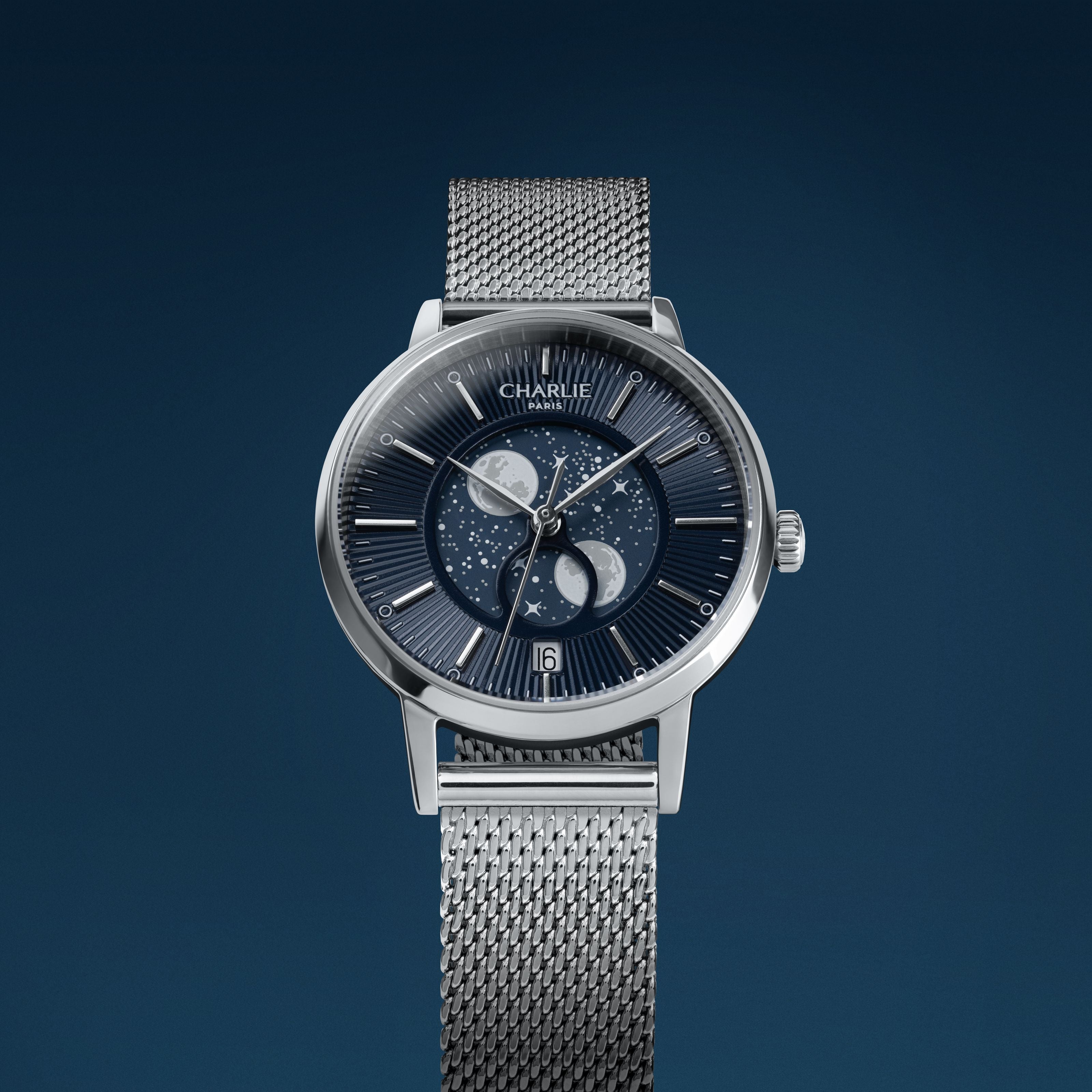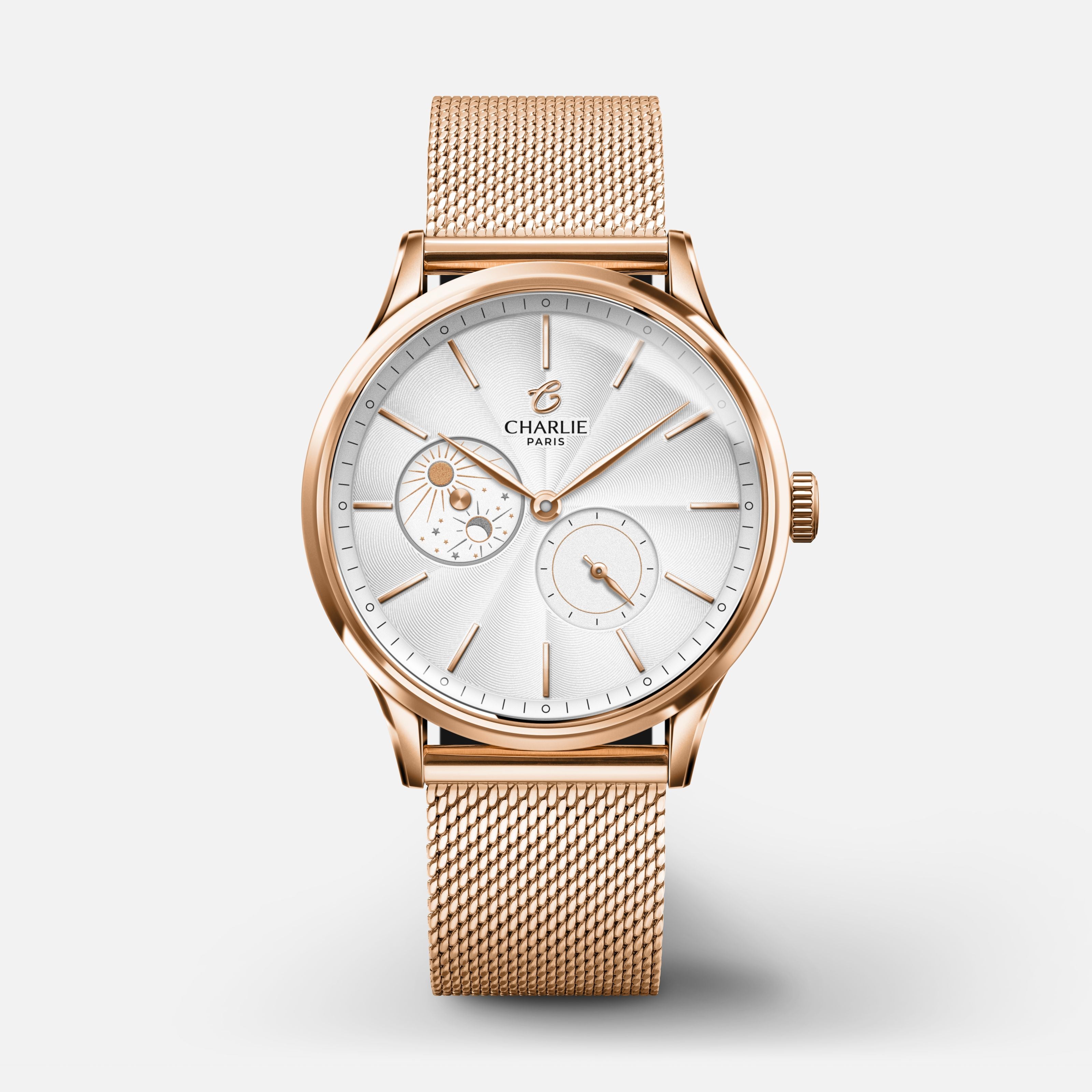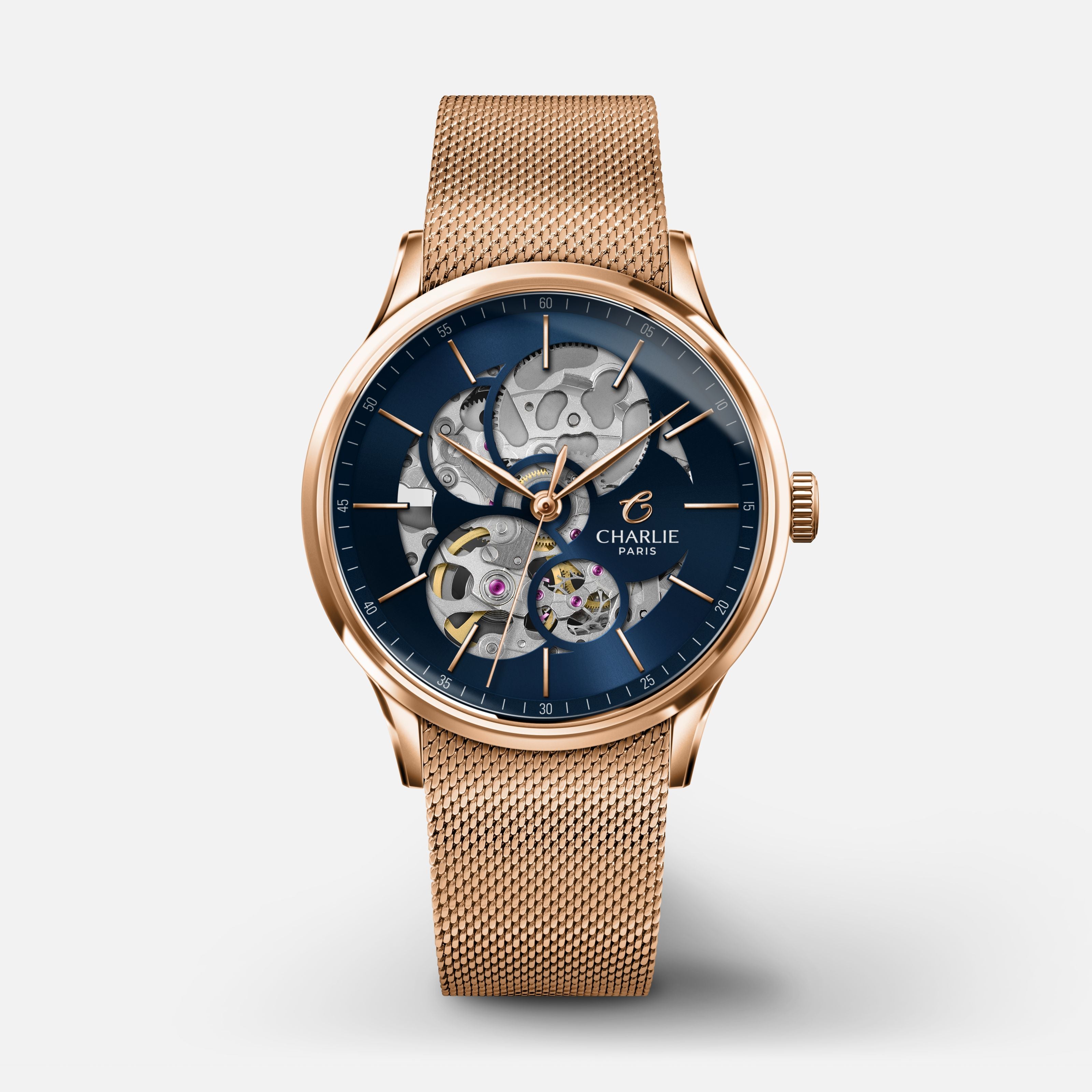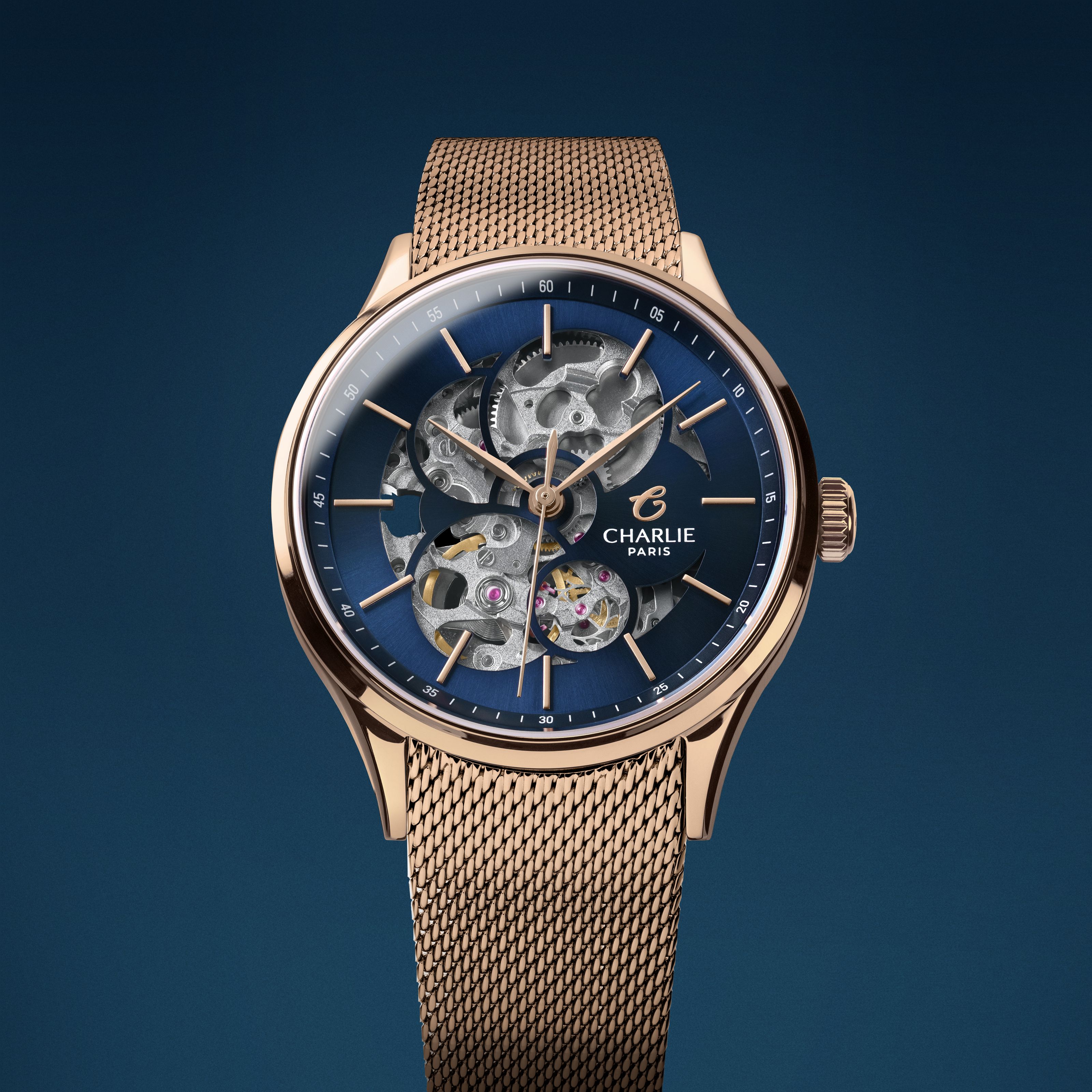If you are thinking of buying an automatic watch, have just acquired one or are simply curious, Team Charlie Paris explains in this article what you need to know to use it properly. If you feel a little lost about the functioning of an automatic watch or if you would like to have some precisions, don't worry, Team Charlie Paris presents you with a small user guide that will allow you to take in hand your automatic watch.
What is an automatic mechanical watch?
- How an automatic watch works
Let's start with a quick reminder of how an automatic watch works. Unlike a battery-operated watch, called a quartz watch for men, the automatic watch works thanks to the energy generated by your wrist when it moves. Among mechanical watches, there are manual winding and automatic mechanical watches. Unlike a manually wound mechanical watch that needs to be wound daily, an automatic watch does not need to be wound if you wear it every day.
- The autonomy of an automatic watch
The automatic watch has a power reserve, which is a reserve of energy that will allow it to continue to function, even when you are not wearing it. This is the autonomy of your automatic watch. At Charlie Paris, our women's automatic watches and men's automatic watches have about 40 hours of power reserve. So if you don't wear it for a few days or more, your watch may stop. If your watch is stopped, we recommend winding it manually for about 20 turns. To do this, turn the crown when it is pressed down (pressed against the case). In general, you need to turn the crown clockwise about thirty times to fully charge it. When you wind your watch, you will feel a small resistance, which corresponds to the spring that is tightening. Do not wind your watch manually when you have it on your wrist, as you may twist the stem of your crown. Furthermore, if you do not move your wrist very much during the day, we advise you to turn the crown a few times each morning before winding your watch. This will allow you to re-energize your watch and prevent it from stopping during the day.
- The tolerance of a movement
Automatic movements will have varying degrees of accuracy, depending on the type of movement. It is quite normal that your automatic watch moves forward or backward a few seconds per day. The tolerance of each of our automatic watches is listed on the product sheet. For example, our Initial automatic watch collection has a tolerance of -10 secs + 30 secs / day. This means that your watch can be 10 seconds behind per day or 30 seconds ahead per day, this is normal and does not require any adjustments on our part. This is the maximum tolerance, it does not mean that your watch will shift that much. Our automatic watch Concordia, has a tolerance of -0 / +15 sec / day.
If your automatic watch has a date, do not change it when the hour hand is between 9pm and 3am because this means that the date change system is initiated. If you need to set the time during this period, we recommend that you change the time by moving it forward so as not to damage your mechanism. Approximately every 5 years, you can have your watch serviced when you notice a change in its behavior (decreasing power reserve, decreasing accuracy, etc.). These adjustments can be made directly with our after-sales service, or with a local watchmaker.
What precautions should I take with an automatic watch ?
- Avoid shocks
Watches with automatic movements are precious and are sensitive to shocks, so you must be careful. We advise you to remove your automatic watch when doing sports, especially when practicing violent sports or for sports during which the watch is subjected to strong shocks and centrifugal forces such as tennis or golf.
- Pay attention to water resistance
Do not wear your automatic watch in the shower, even if it is a waterproof watch. Heat can expand the seals. If you use your watch for swimming or diving (10ATM or more), we recommend that you have the water resistance checked every 2 years.
- Avoid magnetizing it
Finally, avoid prolonged or too close exposure to a source of magnetic waves (electronic objects, induction plates, medical devices, etc.). This could magnetize the movement and cause your watch to behave erratically. These waves will not damage your timepiece but rather degrade its operation and precision. Depending on the strength of the magnetic field, your watch will be more or less affected. A low exposure will slightly disturb the operation of your watch, which will make it less accurate. On the other hand, if your watch is exposed to a strong magnetic field, it may alter its movement, or even stop it in some cases. If your watch is magnetized, the most frequent sign is a sudden and important advance. In this case, it is necessary to entrust the watch to us or to go to a watchmaker to demagnetize the watch.
Read more

Wearing an automatic or quartz watch while riding a bicycle or motorcycle can have certain consequences on the overall functioning of the watch. This is still possible if you respect certain condit...

You've always wondered what the ATM marking on the back of your watch means. The Charlie team will reveal the different notions of waterproofing in order to protect your watch as well as possible.


